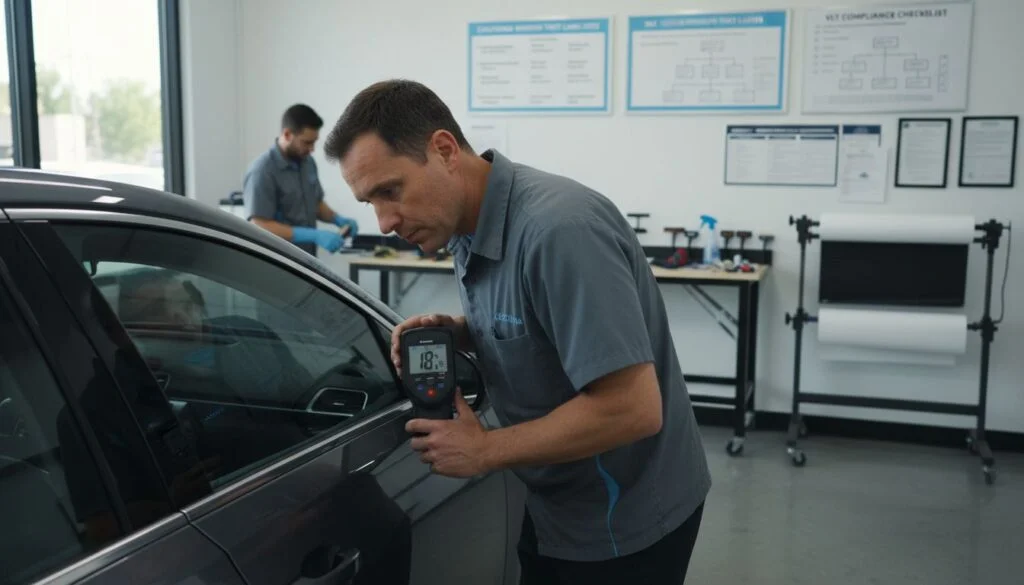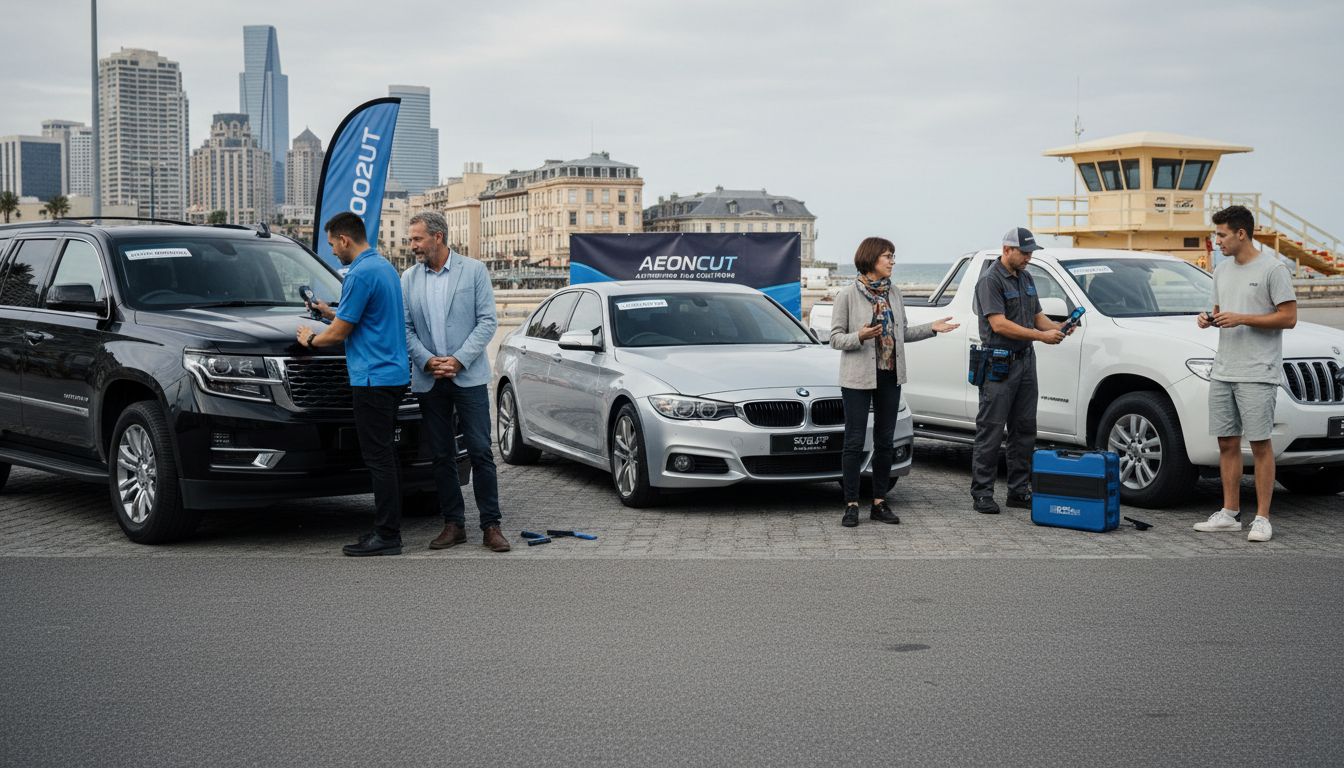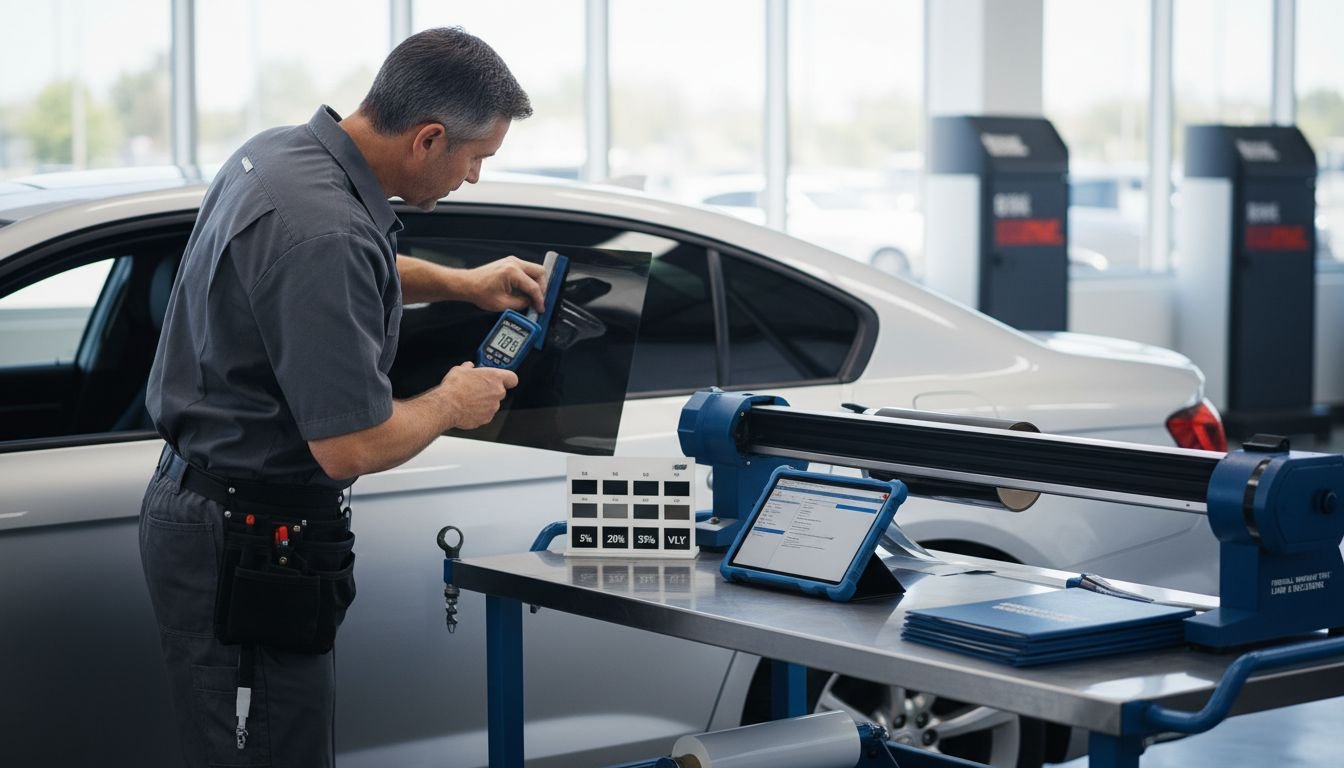
Over 70 percent of vehicle owners are unaware that a simple window tint can lead to fines or even license suspension. Window tint laws shape everyday driving, influencing safety, privacy, and how drivers interact with law enforcement. Understanding these regulations can mean the difference between smooth rides and unexpected penalties, giving professionals and car owners practical steps to stay both legal and protected.
Table of Contents
- Window Tint Laws: Purpose And Basic Definitions
- Global Variations In Window Tint Regulations
- Key Legal Limits: VLT, Reflection, And Medical Exemptions
- Installer And Business Responsibilities Under 2025 Laws
- Enforcement, Penalties, And Risk Mitigation Strategies
Key Takeaways
| Point | Details |
|---|---|
| Purpose of Window Tint Laws | Window tint laws balance safety, visibility, and privacy, regulating light transmission and reflectance in vehicle windows. |
| Regulatory Compliance | Installers must understand local VLT standards and maintain transparent documentation to comply with evolving laws. |
| Global Variations | Window tint regulations vary significantly across jurisdictions, requiring installers to stay informed about regional legal differences. |
| Enforcement and Penalties | Non-compliance can lead to severe penalties, including fines and vehicle inspections, emphasizing the need for proactive compliance measures. |
Window Tint Laws: Purpose And Basic Definitions
Window tint laws represent critical regulatory frameworks designed to balance vehicle safety, driver visibility, and individual privacy. According to findlaw, these regulations fundamentally control light transmission through vehicle windows, establishing precise standards for luminous reflectance and visible light penetration.
Window Tinting Objectives are multifaceted, targeting several key safety and security concerns. As mowt highlights, primary goals include:
- Ensuring driver visibility during various lighting conditions
- Preventing potential criminal activities by reducing window opacity
- Protecting vehicle occupants from excessive ultraviolet radiation
- Maintaining law enforcement’s ability to identify vehicle occupants
The legal landscape of window tinting revolves around Visible Light Transmittance (VLT), a technical measurement describing the percentage of light permitted through window glass. Professional installers must understand that different vehicle windows have varying permissible VLT percentages. Front windshields, driver and passenger windows, and rear windows each have distinct regulatory requirements that change based on local jurisdictions.
Professional window tint installers should recognize that compliance isn’t just about aesthetics—it’s a critical safety protocol. Types of Window Tint: Guide for Installers and Dealers 2025 can provide deeper insights into matching appropriate tint technologies with legal standards. Understanding these nuanced regulations helps professionals avoid potential legal complications and ensures client satisfaction through knowledgeable, compliant installations.
Global Variations In Window Tint Regulations
Window tint regulations demonstrate remarkable diversity across global jurisdictions, reflecting unique regional safety priorities, climatic conditions, and legal frameworks. Professional installers must navigate a complex landscape of international standards that can vary dramatically between countries and even between different administrative regions within the same nation.
Regulatory Complexity emerges through multiple dimensions of window tinting standards. As rsa highlights, countries implement nuanced approaches to regulating window transparency, often focusing on critical safety parameters like:
- Minimum light transmission percentages
- Specific requirements for different vehicle window locations
- Enforcement mechanisms and roadside testing protocols
- Penalties for non-compliance
Professional window tint installers encounter significant challenges when working across international markets. European nations typically maintain stricter Visible Light Transmittance (VLT) standards compared to North American jurisdictions, with some regions allowing as low as 20% light transmission on rear and side windows. In contrast, countries like Australia and the United States often have more variable regulations that can differ substantially between states or provinces.
To successfully navigate these complex global variations, professionals need comprehensive understanding and continuous education. How Window Tint Works: Essential Guide for Auto Professionals 2025 provides critical insights into understanding the technical nuances that underpin these diverse regulatory frameworks. Recognizing that window tint regulations are not static but evolving standards helps installers maintain compliance and deliver high-quality, legally conformant services across international markets.

Key Legal Limits: VLT, Reflection, And Medical Exemptions
Window tint regulations encompass intricate legal parameters that professional installers must meticulously understand to ensure compliance and client satisfaction. According to findlaw, these regulations focus on critical measurements like Visible Light Transmittance (VLT) and luminous reflectance, which determine the legal boundaries of window tinting across different vehicle windows.
Regulatory Measurement Standards vary significantly, with precise requirements for each vehicle window type. As mowt highlights, law enforcement agencies utilize specialized tint measuring devices to enforce these standards. Key measurement parameters include:
- Front windshield VLT percentages
- Driver and passenger side window transparency limits
- Rear window tinting restrictions
- Reflective coating luminance levels
Medical exemptions represent a critical nuance in window tint legislation, allowing individuals with specific health conditions to deviate from standard tinting regulations. These exemptions typically require formal medical documentation proving the necessity of enhanced light protection or reduced UV exposure. Professional installers must navigate these exceptions carefully, ensuring proper certification and compliance with local regulatory frameworks.
How to Read Tint Percentage: A Practical Guide for 2025 can provide installers with advanced techniques for accurately measuring and interpreting window tint percentages. Understanding these technical details is essential for maintaining legal compliance and delivering high-quality services that meet both client expectations and regulatory requirements.
Installer And Business Responsibilities Under 2025 Laws
The landscape of window tint installation has become increasingly complex, with professional businesses facing stringent regulatory requirements in 2025. According to iwfa, installers must now demonstrate comprehensive understanding of legal compliance that extends far beyond simple application techniques.
Key Business Obligations encompass multiple critical domains. As mowt highlights, professional window tint businesses are now required to:
- Maintain accurate light transmission measurement equipment
- Provide documented proof of material compliance
- Implement rigorous staff training programmes
- Maintain comprehensive installation records
- Ensure all tinting materials meet regulatory standards
Professional installers must recognize that legal responsibility extends beyond the immediate installation process. This means developing robust documentation practices, investing in continuous staff education, and maintaining meticulous records of every window tinting service performed. Businesses found non-compliant can face significant financial penalties, potential license revocation, and reputational damage.

How to Read Tint Percentage: A Practical Guide for 2025 offers critical insights for businesses seeking to navigate these complex regulatory landscapes. Understanding these technical nuances is not just about avoiding penalties, but about establishing a reputation for professionalism and technical excellence in the window tinting industry.
Enforcement, Penalties, And Risk Mitigation Strategies
Window tint law enforcement has evolved into a sophisticated system of technological verification and legal accountability. According to mowt, law enforcement agencies now deploy specialized light transmittance meters to conduct precise, immediate assessments of vehicle window tinting during roadside inspections.
Potential Enforcement Actions can be comprehensive and severe. Key penalties for non-compliance include:
- Immediate vehicle inspection and mandatory tint removal
- Substantial financial fines
- Potential registration suspension
- Required vehicle re-certification
- Potential points added to driving licence
Professional installers and vehicle owners must understand that risk mitigation begins with proactive compliance. As rsa emphasizes, this means maintaining precise documentation, using certified tinting materials, and staying continuously updated on regulatory changes. The financial and legal consequences of non-compliance can far exceed the initial cost of proper installation.
How to Read Tint Percentage: A Practical Guide for 2025 provides critical insights for understanding the nuanced technical requirements that prevent enforcement challenges. Successful professionals view these regulations not as obstacles, but as opportunities to demonstrate technical expertise and commitment to safety standards.
Elevate Your Window Tint Business with Precision and Compliance
Navigating the intricate landscape of window tint laws in 2025 demands more than just skillful application. The challenges of adhering to strict Visible Light Transmittance (VLT) standards and legal documentation require tools designed for accuracy and efficiency. Whether you face evolving regulations or complex measurement requirements, AEONCUT’s innovative solutions empower professional installers to meet these demands confidently.

Discover how our window Tint – AEONCUT PPF Pre-cut Cutting software delivers unparalleled precision, helping you produce compliant, high-quality tint applications with minimal waste. Stay ahead of enforcement changes by leveraging our cloud-based updates and extensive pattern libraries tailored for industry regulations. Visit aeoncutsw.com today and transform your installation process into a streamlined operation that champions safety, legal compliance, and customer satisfaction.
Frequently Asked Questions
What are the main objectives of window tint laws?
Window tint laws aim to ensure driver visibility, prevent criminal activities, protect occupants from UV radiation, and maintain law enforcement’s ability to identify vehicle occupants.
What does Visible Light Transmittance (VLT) mean in relation to window tinting?
Visible Light Transmittance (VLT) is a measurement that describes the percentage of light that can pass through the window glass. Each type of vehicle window has specific VLT requirements that installers must follow to comply with regulations.
What are common penalties for non-compliance with window tint laws?
Penalties for non-compliance can include immediate vehicle inspection and mandatory tint removal, financial fines, suspension of vehicle registration, required re-certification, and points added to the driver’s license.
Are there any medical exemptions for window tint regulations?
Yes, medical exemptions allow individuals with certain health conditions to deviate from standard tinting regulations. Typically, these exemptions require formal medical documentation that proves the need for enhanced light protection or reduced UV exposure.
Recommended
- 2025 Guide to Window Tint Colour Options for Industry Pros – AEONCUT PPF Pre-cut Cutting software
- How to Read Tint Percentage: A Practical Guide for 2025 – AEONCUT PPF Pre-cut Cutting software
- How to Read Tint Percentage: A Practical Guide for 2025 – AEONCUT PPF Pre-cut Cutting software
- How to Read Tint Percentage: A Practical Guide for 2025 – AEONCUT PPF Pre-cut Cutting software




